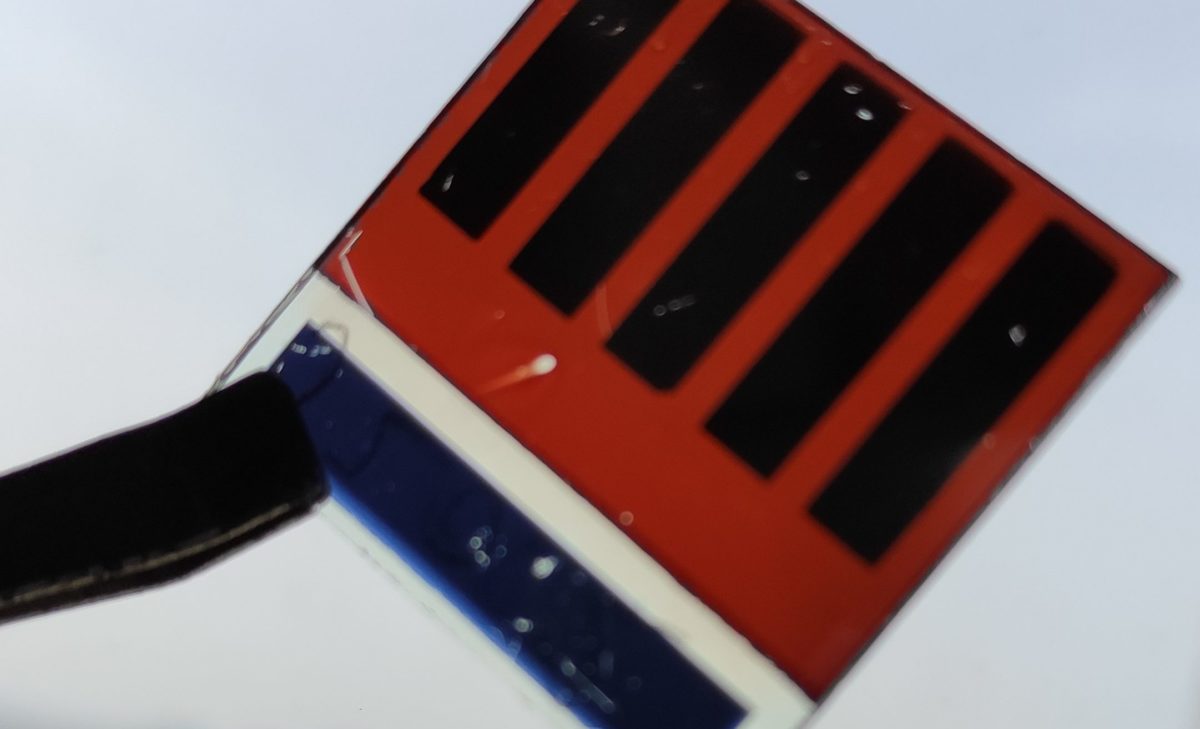Researchers from the Universitat Jaume I, of Castelló, in Spain, claim to have developed the tin (Sn) perovskite solar cell with the highest stability ever recorded to date. “So far, our most promising results have been obtained for photovoltaic applications. However, we are also focusing our efforts on the development of LEDs, using tin hybrid perovskite solar cells as light-emitting materials,” the research's corresponding author, Rafael Sánchez, told pv magazine. “Our investigation is being dedicated to enhancing the efficiency of the LEDs, tuning the color of the emitted light to cover other interesting spectral regions, and extending the device's lifetime under operating conditions.”
Sánchez explained that tin halide perovskites are currently being considered a valid alternative to, hazardous lead halide perovskites and that, however, solar devices built with these materials have so far proved to be less stable than their lead counterparts. “It is worth mentioning that tin-perovskite solar cells suffer from two severe limitations that limit, drastically, their performance, mainly: A reduced open-circuit voltage due to strong charge recombination processes; and limited operational lifetimes, which in most reported studies do not reach the 1,000 hours at maximum power point (MPP) conditions,” he emphasized, noting that these two drawbacks are intimately related to the inherent tendency of tin to be oxidized from Sn(II) into Sn(IV).”The challenge lies in elucidating whether these handicaps correspond to insurmountable intrinsic limitations of this family of materials or, contrarily, whether these weaknesses can be overcome upon a deeper understanding of the photo-electrochemical mechanisms involved and the exploitation of tailored additives that can enhance their functionality.”

Image: Universitat Jaume I of Castelló
The solar cell was built with formamidinium tin iodide (FASnI3), sodium borohydride (NaBH4) as a reducing agent, and a bulky secondary ammonium cation of small size known as dipropylammonium iodide (DipI). “The reducing properties of NaBH4 play the role of preventing the oxidation of Sn(II) into Sn(IV) during the solution processing, which promotes an improved film crystallization and minimizes the number of crystalline defects,” the research group explained. “We have found that employing both additives induces a synergetic effect that leads to an efficiency of 10.61%, with an outstanding stability.”
The cell was able to retain around 96% of the initial efficiency after 1,300h. “Our strategy allows preparing FASnI3-based devices in a highly reproducible manner that reach long-term stability levels that have not been reported, to date,” the scientists explained.
Popular content
According to Sánchez, the amount of materials required to assemble a complete device is rather low, which would undoubtedly contribute to reducing, even more, the costs, especially if this technology reached the mass production level. “Our devices are made of relatively cheap and abundant materials and are fabricated through solution processing methods, concepts that are very desirable toward the implementation of low-cost technologies,” he affirmed. “Our results unveil a new scenario in the tin hybrid-perovskite photovoltaics field and open up a new series of strategies to bring this technology a big step forward.”
The solar cell was described in the paper “Tin perovskite solar cells with >1,300 h of operational stability in N2 through a synergistic chemical engineering approach,” published in Joule.
This content is protected by copyright and may not be reused. If you want to cooperate with us and would like to reuse some of our content, please contact: editors@pv-magazine.com.



By submitting this form you agree to pv magazine using your data for the purposes of publishing your comment.
Your personal data will only be disclosed or otherwise transmitted to third parties for the purposes of spam filtering or if this is necessary for technical maintenance of the website. Any other transfer to third parties will not take place unless this is justified on the basis of applicable data protection regulations or if pv magazine is legally obliged to do so.
You may revoke this consent at any time with effect for the future, in which case your personal data will be deleted immediately. Otherwise, your data will be deleted if pv magazine has processed your request or the purpose of data storage is fulfilled.
Further information on data privacy can be found in our Data Protection Policy.